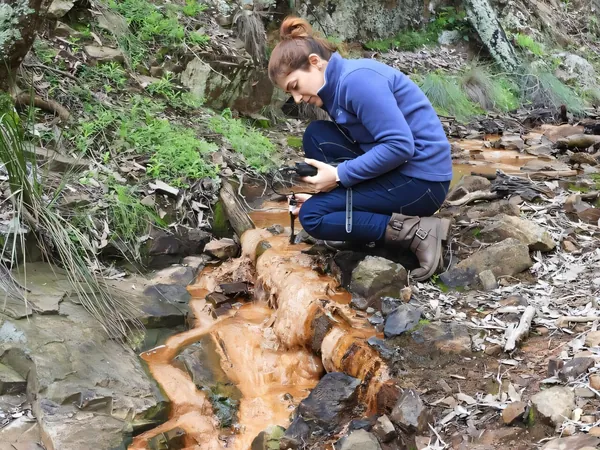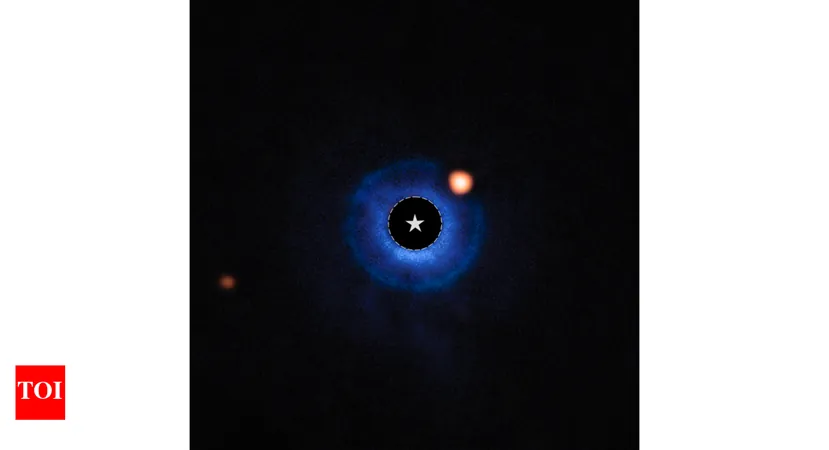
Unlocking the Secrets of Jarosite: The Unsung Hero of Environmental Clean-Up
2025-06-10
Author: Arjun
Jarosite may lack the gleam of precious gems, but in the realm of environmental geochemistry, it stands as a true hero.
This unassuming dusty yellow mineral is more than just a geological formation; it’s a vital storyteller of past acidic conditions, shedding light on historical environments while revealing present dangers and future cleanup possibilities.
Commonly found crusting over the surfaces of mine tailings and arid wetlands, jarosite forms under extreme acidic conditions when iron, sulfate, and potassium or sodium combine.
These harsh scenarios often arise in mining sites, where acid mine drainage (AMD) occurs. Here, sulfide minerals react with water and air, generating water that's not only incredibly acidic but also laden with hazardous heavy metals.
Within these challenging environments, jarosite crystallizes, creating hard, yellowish crusts that might seem innocuous but play a crucial role in environmental chemistry.
Initially, I viewed jarosite as just another mineral, but digging deeper unveiled its profound significance.
Jarosite: A Guardian Against Toxic Metals
This mineral possesses a remarkable ability to capture toxic metals, including arsenic, lead, and antimony, within its structure.
However, this containment isn’t foolproof. Changes in environmental conditions, such as a shift in pH or a decrease in oxygen levels, can cause jarosite to dissolve or transform, potentially releasing those contaminants back into the environment. This dual nature positions jarosite as both a hazard and a potential solution.
Revolutionizing Environmental Remediation
What began as mere scientific curiosity has evolved into a fervent quest to harness this mineral for environmental rehabilitation while decoding complex geochemical histories—and even peering into extraterrestrial landscapes.
My research centers on stabilizing or transforming jarosite to enhance its capacity to securely store contaminants. One exciting strategy involves employing a reduced form of iron known as Fe(II). Under suitable conditions, Fe(II) can transform jarosite into more stable minerals like goethite or hematite, which are less likely to release toxic metals.
By designing lab experiments to replicate these transformative processes and collaborating with European partners to develop practical column systems, we are making strides toward innovative solutions for managing contaminated sites.
The Martian Connection: Jarosite's Cosmic Legacy
Jarosite gained international attention when NASA’s Opportunity rover discovered it on Mars, revealing exciting insights about the planet’s history.
Its presence signifies that Mars once contained acidic, iron-rich water—a parallel to the environments we explore on Earth—opening up discussions on planetary evolution, mineralogy, and geochemistry.
Whether perched on a mining site in Australia or nestled in a Martian crater, this modest yellow mineral unfolds a compelling narrative about resilience, transformation, and the intricate dance between the environment and chemistry.
So while jarosite may never be a contender for beauty awards, it undoubtedly secures its spot as one of my favorite minerals. Its story intertwines the science I cherish—profound, interconnected, and brimming with surprises.




 Brasil (PT)
Brasil (PT)
 Canada (EN)
Canada (EN)
 Chile (ES)
Chile (ES)
 Česko (CS)
Česko (CS)
 대한민국 (KO)
대한민국 (KO)
 España (ES)
España (ES)
 France (FR)
France (FR)
 Hong Kong (EN)
Hong Kong (EN)
 Italia (IT)
Italia (IT)
 日本 (JA)
日本 (JA)
 Magyarország (HU)
Magyarország (HU)
 Norge (NO)
Norge (NO)
 Polska (PL)
Polska (PL)
 Schweiz (DE)
Schweiz (DE)
 Singapore (EN)
Singapore (EN)
 Sverige (SV)
Sverige (SV)
 Suomi (FI)
Suomi (FI)
 Türkiye (TR)
Türkiye (TR)
 الإمارات العربية المتحدة (AR)
الإمارات العربية المتحدة (AR)